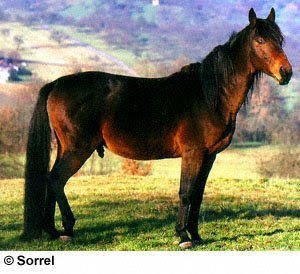Horse : Anglo-Kabarda

Anglo-Kabarda Also Known By: Anglo-Kabardinskaya porodnaya gruppa This breed was created in the northern regions of Caucasus in Russia by crossing Kabarda mares with Thoroughbred stallions at the Malokarachaevski and Malkin studs. the bay stallions Lestorik (1939) and Lukki (1939) and the dark bay stallion Lok-Sen (1923) were of particular importance in development of the breed. The Thoroughbred breeding comprises from 25 to 75 percent in the present day Anglo-Kabarda breed. Anglo-Kabarda horses are well suited to the climate of the Caucasus, thriving at pasture the year round and are able to negotiate difficult mountain terrain skillfully. At the same time, they are much larger and faster than the purebred Kabarda, and the conformation is more like that of the Thoroughbred. The Anglo-Kabarda horses participate at national and Olympic events and are used as saddle mounts on farms of the northern Caucasus. Reference: Hendricks, Bonnie L., International Encyclopedi




